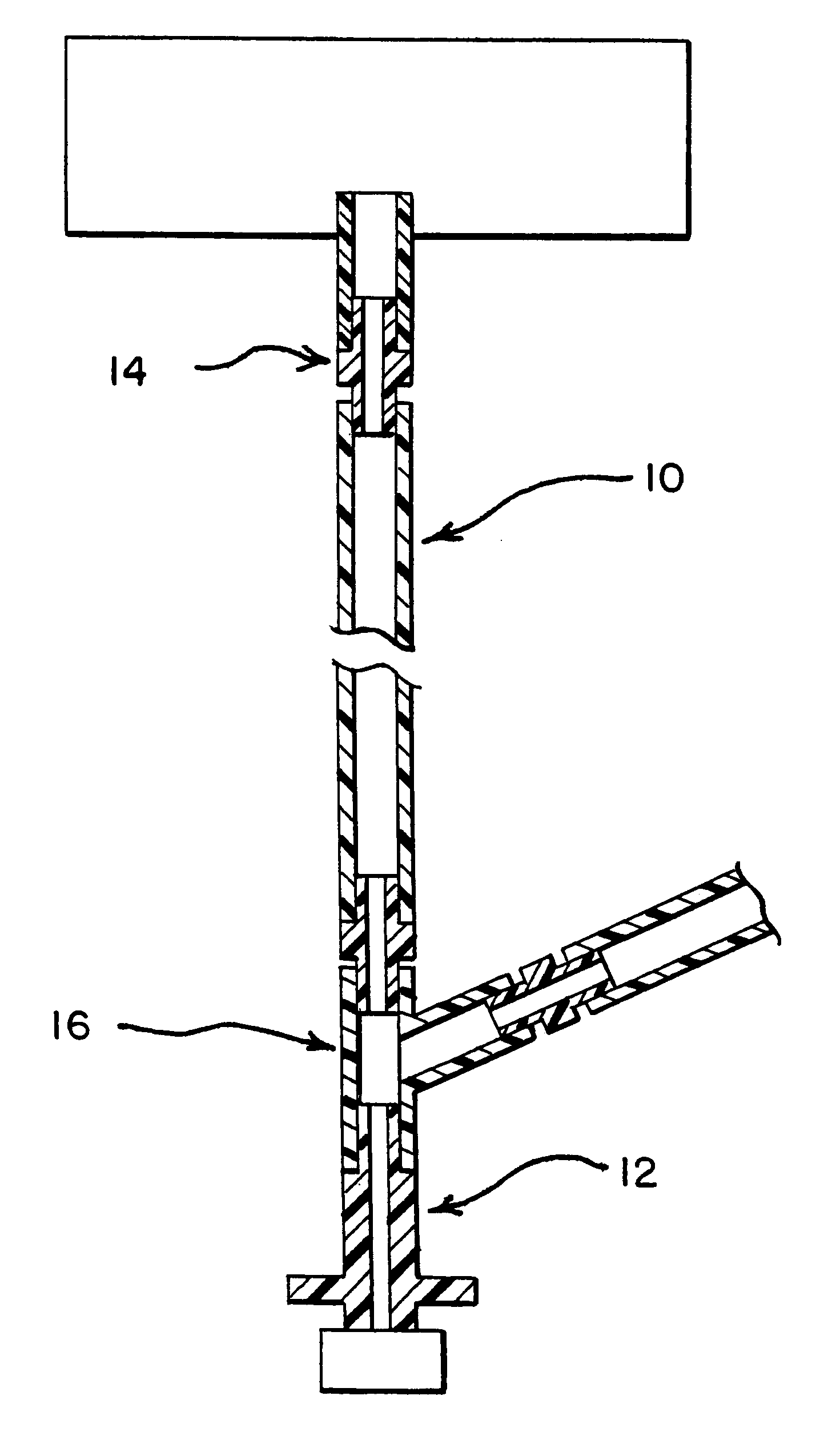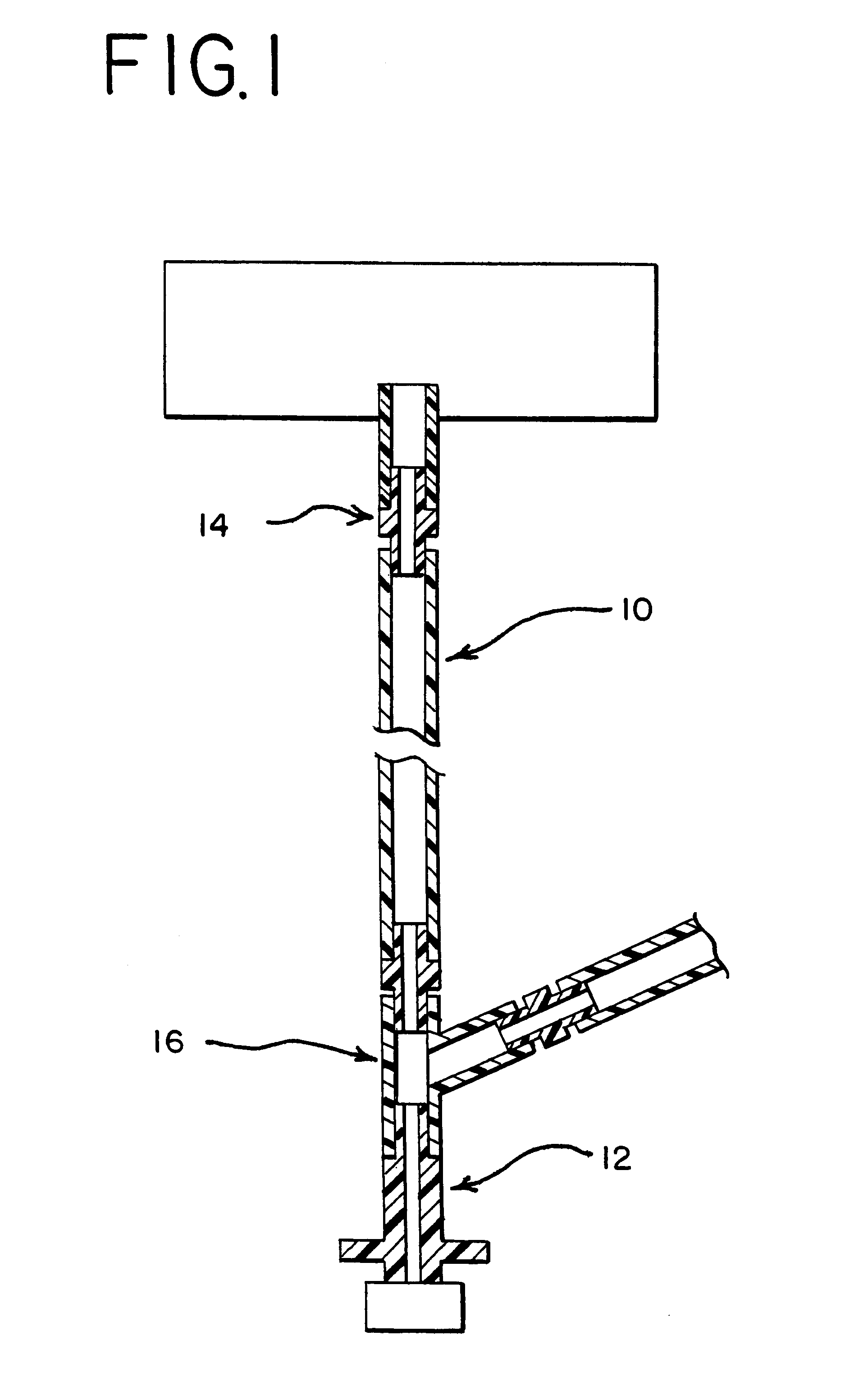Low modulus and autoclavable monolayer medical tubing
a monolayer, low-modulus technology, applied in the direction of catheter, other domestic objects, transportation and packaging, etc., can solve the problems of ineffective solution, inconvenient cleaning, and incinerator corrosion, and achieve the effect of low coil set, low cost and low cos
- Summary
- Abstract
- Description
- Claims
- Application Information
AI Technical Summary
Benefits of technology
Problems solved by technology
Method used
Image
Examples
example 1
Medical tubing was extruded from a Shell Kraton G2705 styrene-ethylene-butene-styrene material. The extruder used was a 1.5 inch standard mixing screw extruder. The medical tubing was extruded at approximately 14 ft / min using open water tank with extrusion temperatures as follows: zone 1 at 370.degree. F., zone 2 at 380.degree. F., zone 3 at 390.degree. F., zone 4 at 400.degree. F., and the clamp die at 400.degree. F. The coil recovery, spring constant, shrinkage, modulus of elasticity, optical clarity, and capability of high speed productivity are summarized in Table 1.
example 2
The tubings of Example 2 to Example 5 were extruded at approximately 24 ft / min using a vacuum sizer, and the extruder was maintained at a constant temperature in all zones and dies. A Dutch-weave screen pad was used. A polymeric material was produced from 99% Shell Kraton G2705 and 1t polypropylene (Montell PF611, 30 MFI). Tubing was fabricated using a similar extruder at similar speeds to the procedure used in Example 1. The tubing was produced with a vacuum sizer rather than at open water. At 360.degree. F., the tubing had poor surface appearance. The surface appearance was optimized at 370.degree. F. As the temperature was increased to 375.degree. F. and above, a localized reduction in the diameter dimension of the tubing, or necking, occurred. The surface appearance became glossier as temperature was increased. The tubing's physical properties and optical quality are summarized in Table 1.
example 3
In Example 3, the composition of the polymeric material was modified to 98% Shell Kraton G2705 and 2% polypropylene (Montell PF611, 30 MFI). Tubing was produced in a manner identical to Example 2. At 360.degree. F., the tubing's exhibited a poor surface appearance. At 375.degree. F. and above, the tubing began to neck. Again, as the temperature was increased, the surface became glossier. Table 1 summarizes the tubing's physical properties and optical quality. A large scale run was performed at 50 ft / min with a double Dutch-weave screen pad. The extrusion temperature window was widened significantly with no necking phenomena observed.
PUM
| Property | Measurement | Unit |
|---|---|---|
| Fraction | aaaaa | aaaaa |
| Percent by mass | aaaaa | aaaaa |
| Percent by mass | aaaaa | aaaaa |
Abstract
Description
Claims
Application Information
 Login to View More
Login to View More - R&D
- Intellectual Property
- Life Sciences
- Materials
- Tech Scout
- Unparalleled Data Quality
- Higher Quality Content
- 60% Fewer Hallucinations
Browse by: Latest US Patents, China's latest patents, Technical Efficacy Thesaurus, Application Domain, Technology Topic, Popular Technical Reports.
© 2025 PatSnap. All rights reserved.Legal|Privacy policy|Modern Slavery Act Transparency Statement|Sitemap|About US| Contact US: help@patsnap.com


